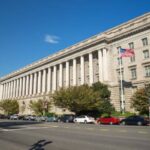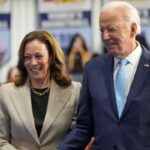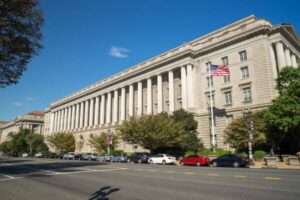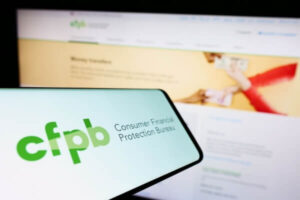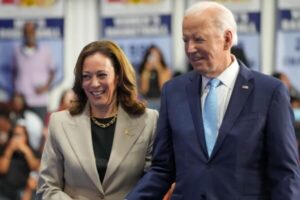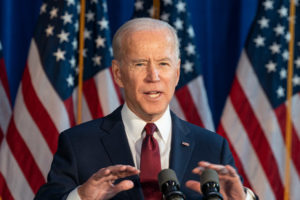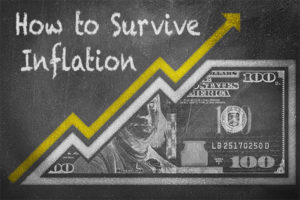President Trump Signs Order to Erase Student Loan Debt for Disabled Veterans
Lawmakers, economists and activist all have made headlines debating solutions to the $1.6 trillion student debt crisis burdening the lives of 44 million Americans.
Some plans go as far as to cancel every cent of student loan debt, while others recommend tilting relief in favor of low-income or less fortunate borrowers.
In August of 2019, President Trump took the latter approach and called on the Department of Education to automatically cancel “every penny” of student loan debt held by veterans deemed totally and permanently disabled.
This, according to President Trump, will benefit 25,000 veterans with an average student loan debt of $30,000, through a process called Total and Permanent Disability (TPD) Discharge.
The problem here is that the Higher Education Opportunity Act (HEOA), which flew through Congress with bipartisan backing in 2008 and was signed into law under President George Bush, already cancels the debt of disabled veterans.
So, what exactly does President Trump’s memorandum do?
What Trump’s Executive Order Means for Veterans
Trump’s order proposes to make it simpler for disabled veterans to discharge their loans.
His plan calls on the Department of Education to seek out veterans eligible for discharge, rather than force veterans to appeal to the government for a discharge that is already their right by law.
In the decade since HEOA was passed, thousands of disabled veterans are still encumbered by student loans. This is because the discharge requirements are notoriously convoluted.
To qualify for discharge, you must prove you are disabled and incapable of seeking gainful employment in one of three ways:
- By submitting a doctor’s certification from a certified M.D educated in the U.S.
- By supplying a notice of award for Social Security Disability Insurance (SSDI) or Supplemental Security Income (SSI) that shows your next scheduled disability review will be within five to sev en years from the date of your most recent SSA disability determination
- By submitting VA documentation that shows you are permanently and completely disabled as the result of a service-related injury.
Of the 50,000 veterans eligible for a loan discharge under the HEOA, only half have qualified. The problem in some cases may be a lack of information. Some veterans are unaware the program even exists, while others who know of the program are fuzzy on the details or how to go about applying.
“It seemed complicated,” John Baughman, a disabled army veteran who served two tours as an infantryman in the Middle East, told Debt.org, “because there was very little information about the process and what I was eligible for.
“Once I discovered what I was eligible for, obtaining the form was relatively simple. I did have to wait a long while before my loan was finally discharged. If I didn’t petition to have my payments deferred, I would have still had to pay into them [until] they were discharged.”
Other veterans have a harder time navigating the system. At least 25,000 disabled veterans have defaulted on around $168 million in student loans.
Trump has also waived federal taxes on student loan discharges and is calling on states to follow suit. Prior to this, if a veteran’s loans were discharged, it was considered income and they would be taxed. It was similar to how consumers who opt for debt settlement still have to pay taxes on the “forgiven” debt.
Trump’s memorandum may be a positive step for disabled veterans having trouble navigating the intricacies of the system, but what about everyone else?
According to the Department of Veterans’ Affairs, disabled veterans hold roughly $1.008 billion in student loans. That’s less than 1/10,000th of the $1.6 trillion student loan debt amount plaguing America.
Trump’s executive action will streamline the mechanisms of a law already in place, but it will do little to ease the burden of the 43.9 million Americans still waiting for help with student loan debt?
Student loan forgiveness programs from Elizabeth Warren and Bernie Sanders, two of the many democratic presidential candidates, promise complete or partial student loan forgiveness. Whether either one wins the presidency and gets a chance to make good on their promise, is an uncertainty. Getting their proposals passed through a divided Congress is even less a certainty.
What Would Happen if We Forgave all Student Loan Debt?
Consumers worry that forgiving all student loan debt might have a catastrophic effect on the economy, leading to scary things like budget deficits and inflated taxes. The idea that we can just forgive and forget about $1.6 trillion sounds absurd.
OK, then how about just forgiving the interest? How about putting a time line on repayment of 10 years with no interest? If you don’t pay it back by then, a nice, affordable interest rate of 3%-4% on the balance of your student loan?
Putting money back into the pockets of consumers may actually spur the economy.
Under the current system, borrowers weighed down by student debt are putting off important life events that have positive economic effects, like buying a home or starting a small business.
According to a study conducted by the Levy Institute, student debt forgiveness could boost real GDP by an average of $86 billion to $108 billion per year. It could also add 1.2 million to 1.5 million jobs a year, after the first few years following forgiveness.
It makes very little sense that students seeking education, which benefit our country by supplying it with a robust and knowledgeable workforce, should commit to decades of life crippling debt.
It makes even less sense to hold graduates to these commitments when the benefits of forgiveness could prove a boon to the economy.
What You Can Do Now about Your Student Loan Debts
All that being said, the 2020 election is still over a year away, and the implementation of policies meant to erase $1.6 trillion in debt may take years to work out.
Rather than wait for politics to play itself out in Washington, consumers could benefit a lot more from educating themselves on how student loan debt will affect us in the years to come.
There are a lot of strategies consumers can implement. For starters, you can try credit counseling from a nonprofit agency to get free, personalized advice on budgeting.
With good credit, you may be able to qualify for a refinanced student loan. Even cutting your interest rate by a single percentage could save you thousands down the line.
If you are really struggling with your payments, consider applying for one of the income-driven repayment plans for borrowers with federal loans. These plans can stretch your loan repayment schedule from 10 to 20, sometimes 30 years. They can also readjust your payment amount to fit your income.
Contrary to popular belief, you don’t have to prove financial need to qualify for an income-contingent repayment plan (ICR) or the revised pay as you earn plan (REPAYE).
One of the downsides to income driven plans is that interest can quickly spiral out of control. This is where the REPAYE’s perks shine above the rest.
Under this plan, the government will cover all of the unpaid interest on subsidized loans for three years. After the first three years, the Department of Education will continue to cover 50% of the unpaid interest accrued on subsidized loans. It also covers 50% of the unpaid interest on unsubsidized loans throughout the entire repayment period.
Keep in mind, the government is only agreeing to pay the interest if your monthly payments fall short of covering it.
If you earn enough to cover your interest payments, you may be better off going with the REPAYE plan, which still offers complete loan forgiveness after twenty years of payments.
Sources:
- Vigdor, N. (2019, August 21) Trump Orders Student Loan Forgiveness for Disabled Veterans. Retrieved from: https://www.nytimes.com/2019/08/21/us/trump-veterans-student-loans.html
- Douglas-Gabriel, D. (2019, August 21) Trump administration to automatically forgive the student debt of permanently disabled veterans. Retrieved from: https://www.washingtonpost.com/education/2019/08/21/trump-administration-automatically-forgive-student-debt-permanently-disabled-veterans/
- Stratford, M. (2019, August 21) Trump eases student loan forgiveness for disabled veterans. Retrieved from: https://www.politico.com/story/2019/08/21/trump-student-loan-veterans-1675170
- Stratford, M (2019, May 24) 51 attorneys general urge DeVos: Erase disabled veterans' student debt. Retrieved from: https://www.politico.com/story/2019/05/24/attorneys-general-devos-cancel-debt-disabled-veterans-1472656
- Kreighbaum, A. (2019, August 22) Faster Loan Forgiveness for Disabled Veterans. Retrieved from: https://www.insidehighered.com/news/2019/08/22/trump-administration-grant-disabled-veterans-automatic-loan-forgiveness
- Lawrence, Q. (2019, August 21) Trump Signs Executive Order Forgiving All Federal Student Loan Debt For Disabled Vets. Retrieved from: https://www.npr.org/2019/08/21/753213306/trump-signs-executive-order-forgiving-all-federal-student-loan-debt-for-disabled
- NA. (2019, August 21) Trump Administration to Automatically Forgive Federal Student Loan Debt for Totally and Permanently Disabled Veterans. Retrieved from: https://www.ed.gov/news/press-releases/trump-administration-automatically-forgive-federal-student-loan-debt-totally-and-permanently-disabled-veterans
- Fullwiler, S, Kelton, S, Ruetschlin, C, Steinbaum, M. (2018, February) THE MACROECONOMIC EFFECTS OF STUDENT DEBT CANCELLATION. Retrieved from: http://www.levyinstitute.org/pubs/rpr_2_6.pdf


